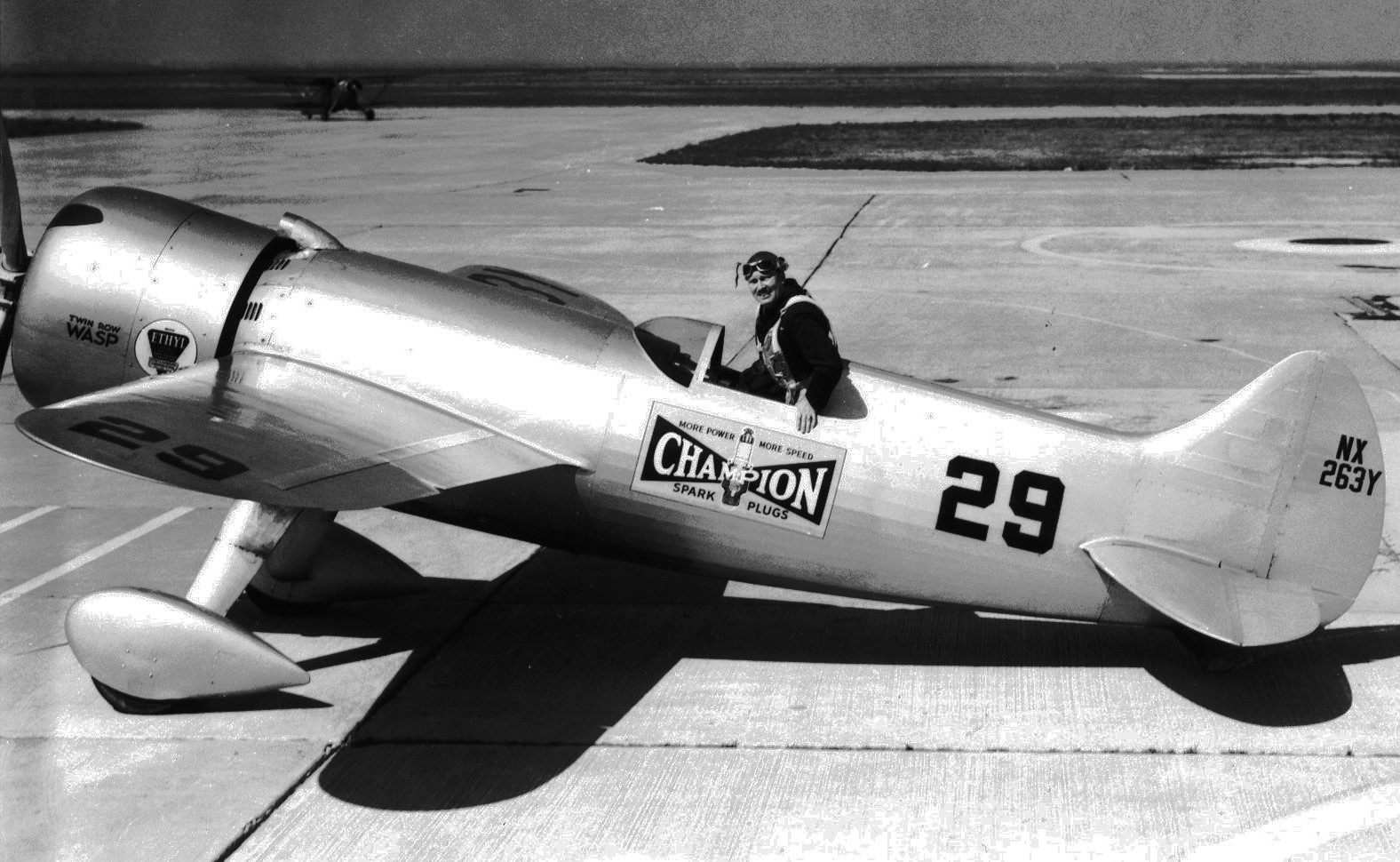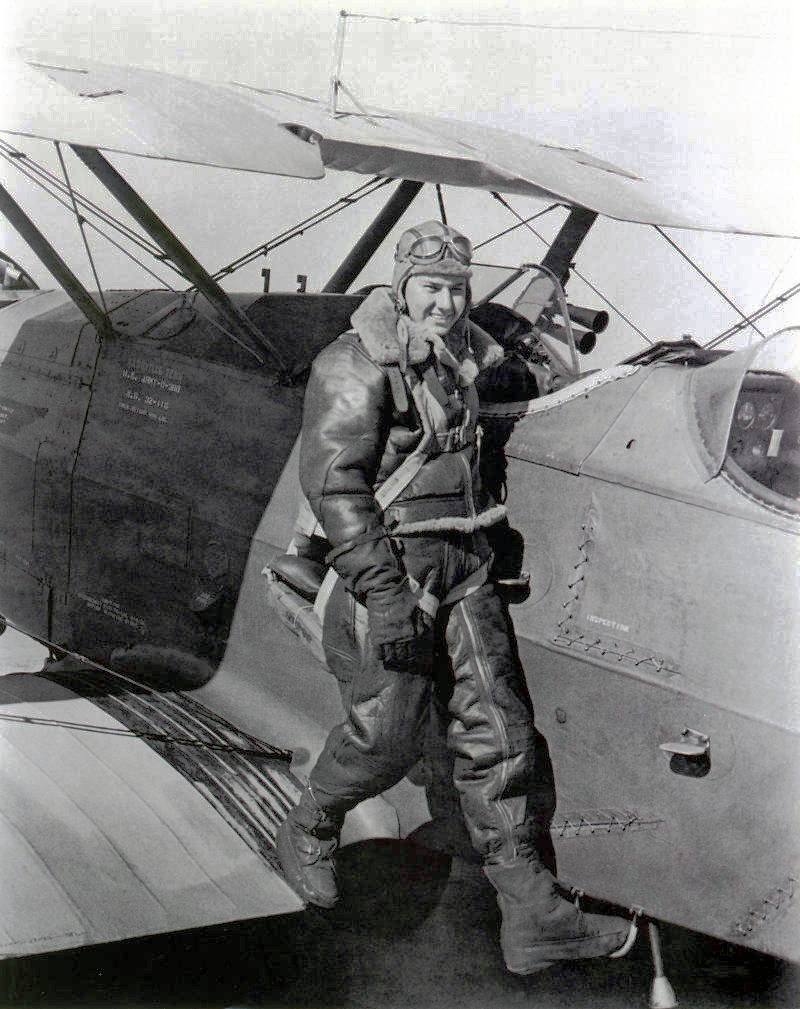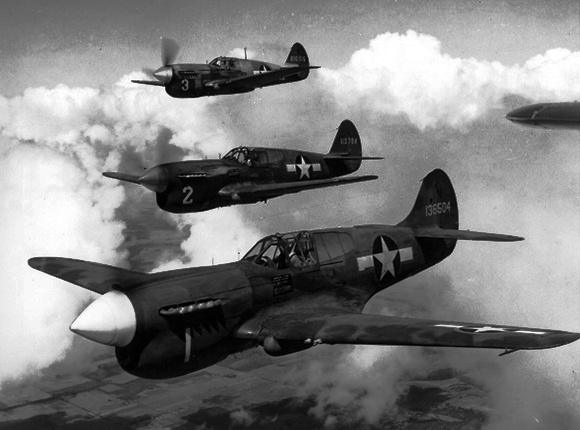No One is Perfect… Part 1 of the Hoover WW2 Trilogy Mullet Key Bay Gunnery Range, Florida 9 November 1942 Modest Beginnings… Born in 1922 as the youngest of three children, Robert Anderson "Bob" Hoover was not – contrary to popular belief – a natural aviator. In the wake of Charles Lindbergh's nonstop solo trans-Atlantic flight in 1927 and the subsequent mania, Hoover developed an obsession with aviation, building and studying model airplanes and reading everything he could on the subject. He developed a fascination with early heroes, like Eddie Rickenbacker and Jimmy Doolittle, and sought to make a mark on aviation akin to their contributions. A book by pilot Bernie Ley, "I Wanted Wings," introducing Hoover to aerobatics and aerodynamics. He studied the maneuvers and memorized every detail.  Fifteen miles from Hoover's home in Nashville was Berry Field, an airline-serviced airport and Air National Guard base. Hoover would ride his bicycle there just to watch the military biplanes and commercial DC-3s that flew to and from the field. There, the young Hoover met the famed pilot, air racer, and performer Roscoe Turner. Hoover snuck up to the pilot's silver Turner-Laird RT-14 Meteor while Turner was distracted, and started to wipe the plane's windshield. Upon finishing the job, Hoover turned around to find himself face-to-face with the legendary airman. A smiling Turner expressed his appreciation for a nervous Hoover's gesture and allowed him to sit in the plane's cockpit – a moment that left an indelible mark on the youngster. Bitten by the Bug… At the age of 15, Hoover got a job sacking groceries and stacking produce in downtown Nashville, working 16 hours a day to earn two dollars that he used to fund his flight training – which cost 8 dollars for an hour-long lesson in a Piper Cub at Berry Field. Under the guidance of G. Louis Gasser – an early airmail pilot and Nashville's first commercial pilot – Hoover worked to overcome severe motion sickness, soloing after a year of flying. According to Hoover, in his autobiography, "Flying Forever," "It was worth every penny… I experienced another dimension of existence, no longer tied to the earth. I felt free, free of gravity, free of everything. Flying was everything I wanted it to be." While continuing to overcome his motion sickness, he would practice many of the aerobatics he had learned on his own, and conducted private air shows, consisting of low flying, Cuban eights, Immelmanns, and hesitation rolls, for his family and friends.  After graduating from high school in 1940, and wanting a career in aviation, Hoover enlisted in the Tennessee Air National Guard to become a tail-gunner (at the time, military pilots were required to be 21 in age, and have two years of college). His unit was mobilization to active duty and transferred to South Carolina. Continuing to use his pay to build flight experience, Hoover and another airman, future author Denny McClendon, fixed up a wrecked Taylor Cub and – on a two-week leave - flew around the country. On the tour – the pair sold 5-minute airplane rides to the public, working around regulations requiring pilots to possess a commercial license by actually selling gold-plated pilot wings and then gifting a ride to the buyers. Practicing Perfection… The opportunity to become a military pilot arose when Hoover's unit merged into the Army Air Corps. Shortly after the Japanese attack on Pearl Harbor, Hoover reported to Thompson-Robbins Airfield in Helena, Arkansas, for primary flight training, flying PT-17 Stearmans. Already an experienced pilot, Hoover sped through the training, earning high marks from instructors. Upon graduation, he was asked to perform 30-minute demonstration for his fellow pilots. After learning to fly and navigate on instruments, as well as how to fly twin-engine aircraft, in Mississippi, Hoover learned that – on the sole basis on his height of six-foot, two-inches – he wasn't going to fighter training like he wanted, as Air Corps policy was to send short pilots to fighters and taller pilots to bomber or transport aircraft. Working with a shorter friend who did want to fly bombers, he bribed a sergeant in personnel with twenty dollars, and suggested the purchase of some Kentucky bourbon, to swap their training orders. Shortly after the Japanese attack on Pearl Harbor, Hoover reported to Drew Field in Tampa, Florida. There, he developed a technique to recover the Bell P-39 Airacobra from flat spins, a feat previously thought to be impossible, by extending the plane's landing gear and flaps to bring it back into a normal spin. It wasn't until 1958 that the maneuver added to aerobatics routines and named the Lomcevak, the Czech word for "headache." But not all of Hoover's P-39 experience were as good – as his first in-flight emergency occurred when, shortly after takeoff on a training flight, the engine of the P-39 Hoover was piloting overheated and burst into flames. As smoke filled the cockpit, Hoover cranked open the cockpit's side window, hoping to clear his vision. It didn't work. Hoover struggled and coughed, but managed to shut down the Airacobra's system and make a dead-stick landing back on the runway. He escaped the plane unhurt, but the fire continued to spread, consuming the $50,000 aircraft. But his next in-flight emergency would be far different.  Target Practice Assigned to the Third Air Force, 337th Fighter Group's 98th Fighter Squadron – Hoover was flying a P-40K, tail number 42-9953, as part of a flight of four for a training mission over Mullet Key Bay, Florida, on November 9, 1942. The objective was target practice, firing at a water stick created intentionally with patches of dye. After each of the plane's dive down and fired upon the target, they were to climb back up into a rectangular traffic pattern similar to a landing pattern at an airfield, only at high speeds. After attacking the target on a pass, Hoover's plane began to shake. "My first thought was that the engine had failed and was tearing itself apart," Hoover recalled. "Smoke and fire cascaded from the cowling around the engine. Heat intensified in the cockpit. I tried to assess the damage and think quickly about what to do." Trapped! Without any power from the engine, Hoover couldn't gain any altitude to bail out safely, so his only alternative was to dead-stick the plane into the water. Despite no experience in landing on water before, an apprehensive Hoover made a smooth landing on the water's surface. But quickly thereafter, the P-40K began to sink – with Hoover still in the cockpit! Wrapped in radio cords and shoulder straps, Hoover tried to get out of the cockpit. Panicked as water rushed in, Hoover feared drowning, but – with seconds left – he tugged on the cords and inflated his life vest, easing himself out and away from the sinking wreck. Forty minutes later, a fishing boat retrieved the young Hoover from the cold Gulf water. He was taken ashore and was collected by Hoover's commanding officer via a small L-4 reconnaissance plane. Being the P-40 "Kitty Hawk" had an established history of engine trouble, the cause of the accident was quickly assumed to be the result of that. Someone, however, decided to salvage the plane from its fifty-foot depth. When a floating crane snagged the Kitty Hawk from the water, investigators were shocked to see that more than fifty bullet holes had torn through the plane. It concluded that the pilot who was behind Hoover in the gunnery pattern had accidentally machine-gunned his plane out of the sky! Given that the camouflage pattern the Kitty Hawk was painted in bore a striking similarity to the brown and tan water of the Gulf of Mexico that time of year, Hoover was quick to forgive the simple mistake of his fellow pilot – a trait Hoover would be renown for in the future. Having had one plane shot out from under him, Hoover and his squadron was ordered to Europe shortly thereafter. To Part 2 of the Hoover WW2 Trilogy...
|
